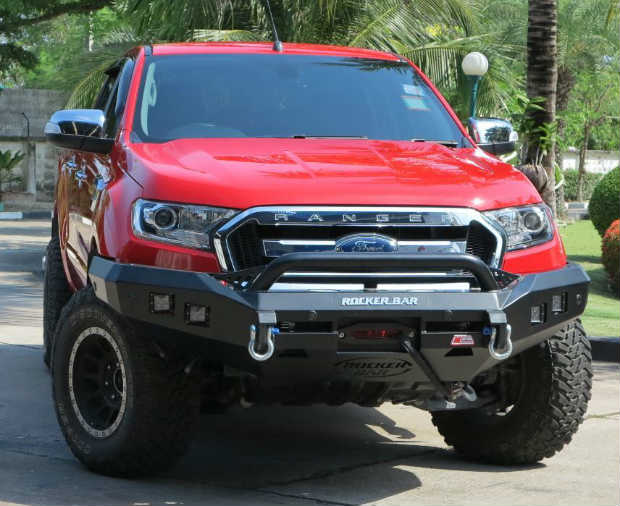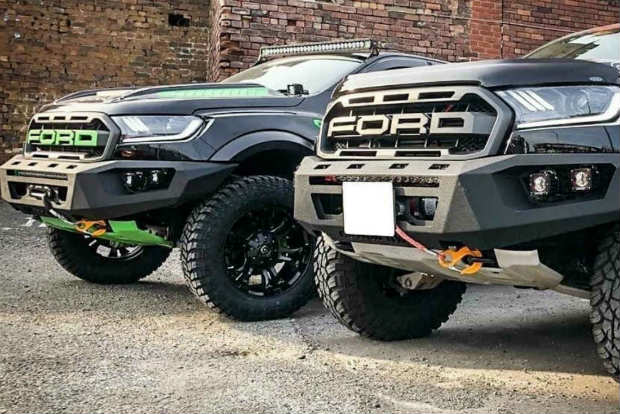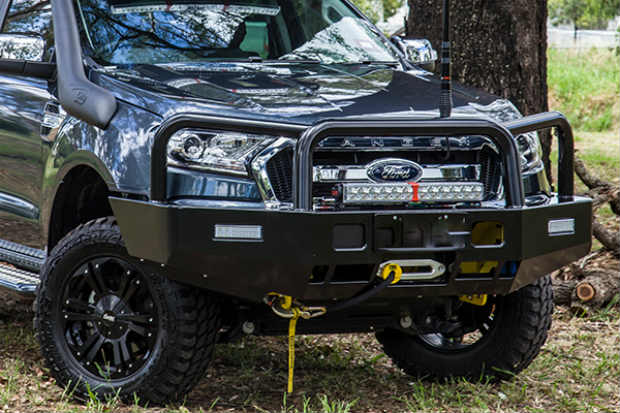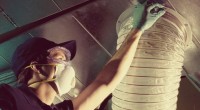Types of Bull Bars & Their Importance for Your Ford Ranger
Posted by Alex Green | On 30 November,2020 | In Business & ProfessionalVehicles such as the Ford Ranger are made to traverse through vast landscapes and varying terrains. Overcoming obstacles is a 4×4’s second nature but these vehicles aren’t invincible. Since danger is a lot more present when you’re off-roading, protection is what both you and your Ranger need.

In the case of protecting the most vital component, the engine, a bull bar is your best choice. This piece of metal goes in front of the grille and headlights and it’s made of a crossbar and hoop(s). This type of front-body protection keeps your vehicle safe from animal strikes, big logs, rocks, trees, large bushes and so on.
You also get to mount additional accessories such as lights and a winch thanks to mounting points. Much like a performance exhaust upgrade, a bull bar can change the way you use your Ranger for the better, as long as you get the right one.
Do I Need a Bull Bar?
Many wonder whether a bull bar is really that necessary for a powerful vehicle such as the Ford range. However, if you want to explore unknown terrain and go farther than the usual trails, a quality Ford Ranger bull bar is worth to invest in. Whilst it isn’t the only upgrade you should install, it surely is amongst the more important ones when it comes to off-roading. It’s best to minimise the chances of damage and injury than to hope you never encounter them.
Types of Bull Bars

Bumper
These types of bull bars are fitted on the front bumper and provide solid protection. If you want an upgrade from your Ranger’s stock fender, then a bumper bar is a great choice.
Baja
Something similar to a bumper bar, the baja bar gives you the option to use high-power winches. This is thanks to the way the baja bar is mounted. It goes onto the chassis of your 4×4 which makes them eligible for off-road competitions too.
Single & Triple Hoop
Both single and triple hoop bars are your standard off-the-shelf options with the former being less protective than the latter. This is because single hoop bars have one cross bar and one hoop going over the radiator. Triple hoop Ford Ranger bull bars have two additional hoops which go over the headlights.
Competition
Designed to be used specifically for off-road competitions, these bull bars offer maximum ground clearance. Although their level of protection isn’t the greatest, it is still a solid one. The biggest perk of competition bull bars is that they are easy to remove when damaged, saving time and allowing racers to get back to the competition faster.
Centre
A centre bull bar or grille guard as some people call it, isn’t a very popular style since it doesn’t make for an attractive look. This type of bull bar only covers the middle section of the front of the vehicle, the grille with nothing covering the headlights. Despite the lack of headlight protection, a centre grille guard will still provide a solid level of shock absorption in case of collisions. It also requires less hardware and time to install than a triple hoop bull bar which is also known as a full grille bar.

How Do You Install a Bull Bar?
Usually installing a bull bar onto your Ranger doesn’t require any special tools nor is it a complex process. Once you get a hold of your Ford Ranger bull bar and have checked that every piece of hardware is present, you’ll need to start by mounting the brackets. Depending on the type of bull bar you got, there could be both lower and upper brackets or just lower brackets. Usually, a full-width bull bar requires both types of hardware.
The brackets go on pre-drilled factory holes meant to accommodate various accessories including bull bars. If your Ranger already has tow hooks or a winch installed on these holes you’ll need to remove them. You can install the winch on the bull bar later on and have both accessories available on your 4×4.
If your Ranger doesn’t come with factory drilled holes, you’ll need to drill some yourself. For this, you’ll need someone to hold the bull bar over the centre of the bumper so you’re able to mark the spots where the bolts that connect the brackets and the bull bar go. Next, get a portable saw or a die grinder and cut the small holes in the bumper and on the undercarriage if your bull bar comes with both lower and upper brackets
Lower mounting brackets are often mounted differently than upper brackets. Make sure you pay close attention to the instruction manual provided with your bull bar. Not every bull bar is installed the same way, though. When the brackets are in place, get the bull bar and connect it to the brackets. Line up its holes with the ones on the brackets and bolt them together. When you have your bull bar centred and level tighten the bolts and nuts fully and you’re done.
Related Posts
About Author
alex
?You can always edit a bad page. You can’t edit a blank page.Likes: ❤️ Beer ?, Pizza ? Dislikes:? Mice?, Barber ?Favorite song: ? Hurts - Wonderful Life



